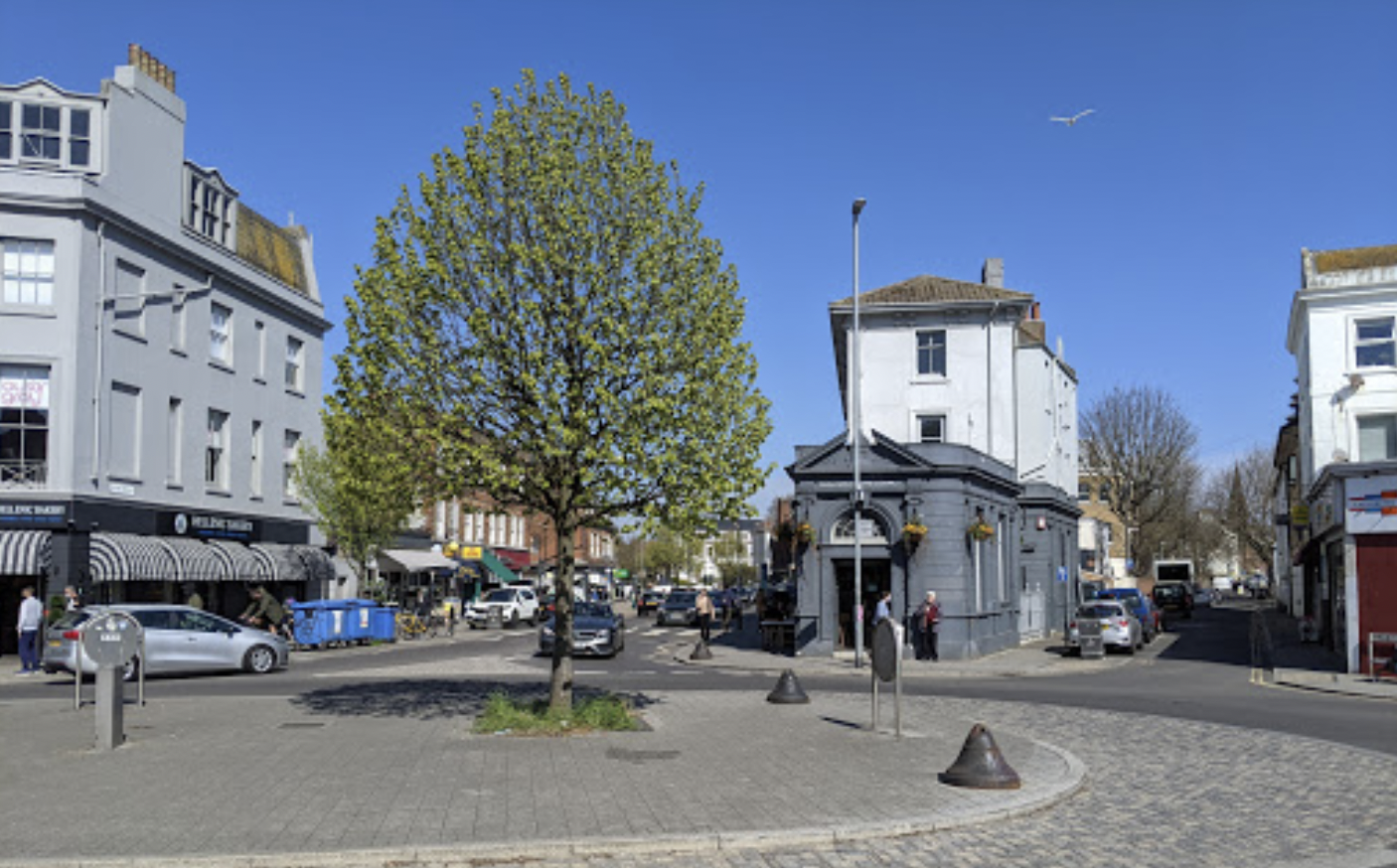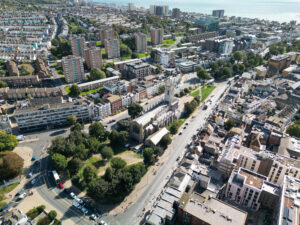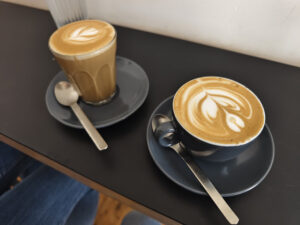Seven Dials is quite possibly Brighton’s ‘best-kept secret’ neighbourhood. Despite being no more than a ten-minute walk from either the centre of town or the train station, it retains a relaxed feeling with quiet residential streets leading away from its bustling centre. Perhaps the reason people don’t venture to the neighbourhood is that it sits at the top of a rather large hill, but those who brave the climb are rewarded with beautiful architecture, great independent shops and some excellent pubs and restaurants.
The somewhat under-the-radar reputation of Seven Dials might be about to change, however. In the last twelve months, the neighbourhood has featured in the top ten of The Sunday Times’ ‘Best Places to Live’ list and made it onto TimeOut’s list of the ‘12 Coolest Neighbourhoods in the UK’. Seven Dials is, then, both literally and figuratively, a neighbourhood on the up.
In this post:
History
Seven Dials takes its name from the seven roads leading off of the roundabout at its centre, which appear to form ‘dials’ like those on a clock when viewed from above (which also makes it easy to spot on Google Maps!). Once upon a time, of course, these roads did not exist and the area would have felt very open. In the 1800s the area that would become Seven Dials was made up of fields used for agriculture, windmills and other assorted buildings relating to services and industry such as laundries and brickfields. It was the arrival of the railway to Brighton in the 1840s that saw Seven Dials begin to take on a more affluent feel.
Due to its position above and upwind of the train station, Seven Dials was not adversely affected by the smoke from the station and as Brighton itself began to rapidly develop as a seaside destination so Seven Dials became an area of large houses and parks. The middle and late 1800s saw the development of most of the residential and other buildings that you can still find in Seven Dials today (check out Clifton Terrace or Montpellier Crescent for some classic Regency architecture), and it was around this time that the general shape of ‘the Dials’ and the central junction joining them all was formed. The area saw somewhat more mixed fortunes from the early 1900s through the post-WW2 era before reemerging as a relatively affluent and trendy part of Brighton from the late 1980s onwards.
The roundabout from which Seven Dials derives its name didn’t appear until the 1920s, when it was probably a little less busy than it is today! As traffic increased over the years, the Seven Dials roundabout actually developed a seriously negative reputation due to safety concerns, and was regarded as being one of the most dangerous parts of the city’s road network (there was even a song about it!). Brighton & Hove City Council responded to the safety concerns with a major overhaul of the roundabout in 2013 which saw it adapted to its current oval shape and some of the ‘dials’ reduced to one-way roads.
Seven Dials Today
Seven Dials is a popular neighbourhood to live in, and those who know it enjoy the busy-yet-relaxed vibe around the central roundabout, with bakeries, coffee shops, delis and more to chill at and watch the world go by. The main roads in and out of Seven Dials are busy, and there’s no doubt the best way to explore is on foot, with wide pavements in the centre and leafy residential streets connecting to the rest of the city.
In terms of residents, Seven Dials is relatively affluent and (as with much of Brighton) has a mix of families, 30-ish-year-old professionals and older residents It’s certainly less ‘studenty’ than it once was and students are probably the main category of Brighton residents that don’t tend to live in Seven Dials.
There are lots of great pubs in the neighbourhood, but staying super-central, within a minute’s walk in different directions just off of the main roundabout you can find three of them: The Good Companions, The Cow and The Shakespeare’s Head (Shakie’s to the locals). Grabbing a seat outside the front of The Crescent on Clifton Hill is a lovely option on a nice day, with an unusually wide, open junction offering lots of sunshine and views out to sea (well, just about).
If it’s coffee and a pastry you’re after then the best options are equally-central. PUCK is recommended or pull up a stool outside at the counter of the Seven Dials branch of the local chain The Flour Pot Bakery. For eating out, Red Snapper is a local favourite, serving up well-priced Thai dishes in a cosy atmosphere (it’s BYOB, too!). Just over the road, there’s also the excellent Murasaki for ‘Izakaya’, Japanese tapas-style dining.
One of the nicest aspects of Seven Dials is its many independent shops and businesses. Kindly is a 100% plant-based and eco-friendly grocery store selling locally-produced food and other items. Jasmine Florist is just over the road from Kindly, for all your flower and plant-buying needs. Seven Cellars is a well-stocked independent wine merchant with a dizzying array of wines and a great selection of beers, too. And there’s also Hi Cacti, selling a range of plants, accessories, art and other bits.
On the fringes of Seven Dials, you’ll find St Ann’s Well Gardens, a lovely local park with a brilliant play area for children, a cafe, and tennis courts. A stroll through the park here is the perfect accompaniment to an afternoon spent exploring Seven Dials. There’s also Dyke Road Park and Hove Green heading out to the north-west of Seven Dials for more green space.
Seven Dials is without doubt one of Brighton’s trendiest neighbourhoods, which in recent times has been garnering national attention as a great place to live. Perched on the hill above Brighton railway station and Western Road, Seven Dials has developed into one of the city’s more affluent neighbourhoods, and offers a relaxed slice of life when compared to the hustle and bustle of the city centre.





